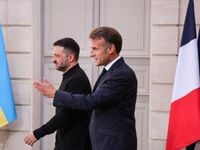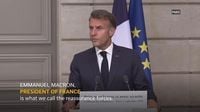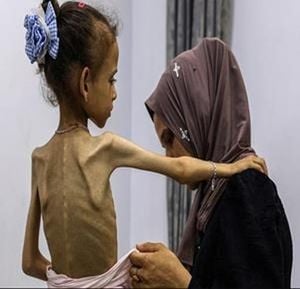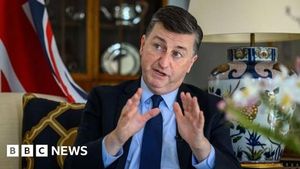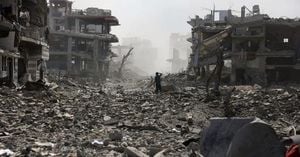In a significant development for Ukraine’s future security, French President Emmanuel Macron announced this week that 26 countries have formally pledged to send troops or provide other military support to Ukraine—but only after a peace deal or ceasefire is reached with Russia. The promise, revealed at a high-profile summit in Paris on September 4, 2025, is being hailed by Ukrainian President Volodymyr Zelensky as a “serious concrete step” toward safeguarding Ukraine against renewed aggression, while also exposing divisions among Western allies and intensifying tensions with Moscow.
The so-called “coalition of the willing,” a group of 35 countries mostly from Europe but also including Australia, New Zealand, Japan, and Canada, convened at the Élysée Palace to hash out the details of what’s being called a “reassurance force.” The idea is simple on paper but complex in practice: once the guns fall silent, this multinational force would maintain a presence on Ukrainian soil, in its skies, and at sea—not to fight Russia, but to deter any future attacks and guarantee Ukraine’s sovereignty.
“We have today 26 countries who have formally committed—some others have not yet taken a position—to deploy as a ‘reassurance force’ troops in Ukraine, or be present on the ground, in the sea, or in the air,” Macron told reporters, standing alongside Zelensky. The French president was careful to stress that these troops would not be on the front lines, but would serve as a tripwire against any “new major aggression.” According to AFP, Macron said the force would be “a key pillar of the security guarantees” that Ukraine’s allies hope to put in place if and when the war ends.
For Zelensky, who has spent much of the past year lobbying for firmer Western commitments, the announcement was a welcome breakthrough. “I think that today, for the first time in a long time, this is the first such serious concrete step,” he said. On social media, he expanded: “The Coalition of the Willing is working very actively—military, political, advisory levels. We already understand the basis for real security guarantees. The framework is there. Guarantees are not only about ‘someday’—they are also about the present.”
The reassurance force is not just about boots on the ground. Macron explained that another pillar of the plan is the “regeneration” of Ukraine’s military, so that it can not only resist but also deter future Russian aggression. The focus, according to German Chancellor Friedrich Merz, should be on “financing, arming, and training the Ukrainian armed forces.” Germany, Kyiv’s most important partner in this area, has yet to decide on sending troops, with Merz noting that any decision would require parliamentary approval and depend on the nature of U.S. involvement. “Germany will decide on military involvement at the appropriate time once the framework conditions have been clarified,” a German government spokesman said after the summit, as reported by AP. Italy, for its part, will not send troops but is open to monitoring any future peace deal, according to Prime Minister Giorgia Meloni’s office.
The United States’ role in this evolving security architecture remains murky. While both Macron and Zelensky have said Washington is “very clear” about its willingness to participate in security guarantees, the specifics are still being negotiated. U.S. President Donald Trump, who returned to the White House earlier this year, spoke to European leaders via video conference following the Paris summit, but the American contribution to the reassurance force is still up in the air. “As for in what format, I am not yet ready to tell you in detail,” Zelensky said, while Macron added, “The planning work will be finalized with the United States.”
The summit also served as a platform for Western leaders to send a message to Russian President Vladimir Putin: the West is united, and the pressure is mounting. British Prime Minister Keir Starmer, who participated remotely, emphasized the group’s “unbreakable pledge to Ukraine, with President Trump’s backing,” and called for intensified pressure on Putin to secure a cessation of hostilities. According to AP, Finnish President Alexander Stubb said Trump urged Europe to stop buying Russian oil and gas—arguing that such purchases are “funding the war”—and to place economic pressure on China for indirectly supporting Russia’s war efforts. A White House official told Axios that Trump was blunt: “You’re funding the war” through energy imports, and Europe must “cut Russia off and pressure China to do the same.”
Yet, despite these pledges and warnings, the path to peace remains uncertain. Putin, speaking in Beijing after attending a military parade with Chinese President Xi Jinping, claimed Russian troops were advancing “on all fronts” and suggested that if “common sense prevails,” an acceptable option for ending the conflict could be found. However, he has also been clear—and combative—about Russia’s red lines. At the Eastern Economic Forum in Vladivostok, Putin warned that any Western troops on Ukrainian soil would be considered “legitimate targets” by Russian forces. “If some troops appear there, especially now during the fighting, we proceed from the premise that they will be legitimate targets,” he said.
Russia’s official stance, articulated by Foreign Ministry spokeswoman Maria Zakharova, is categorical: “Russia is not going to discuss the fundamentally unacceptable and security-undermining foreign intervention in Ukraine in any form, in any format.” Even after a peace deal, Moscow refuses to countenance the deployment of foreign troops on Ukrainian territory, seeing it as an existential threat.
On the ground, the violence continues to claim lives. On September 4, a Russian rocket attack in northern Ukraine killed two members of the Danish Refugee Council who were clearing mines in a previously occupied area. The same night, Russia launched 112 strike and decoy drones across Ukraine; air defenses managed to intercept or jam 84, according to Ukraine’s Air Force, as reported by AP. Meanwhile, diplomatic tit-for-tat persists: Russia expelled an Estonian diplomat in response to Estonia’s expulsion of a Russian envoy last month.
Despite the focus on postwar security, the reality is that peace remains elusive. Earlier this year, a 30-day ceasefire and a Black Sea shipping agreement provided brief respites, but both sides have accused each other of violating these deals, and the agreements have since lapsed. Trump, who campaigned on promises to end the war “promptly,” has shifted his position, now preferring a comprehensive peace agreement over a simple ceasefire. His administration has doubled tariffs on Indian imports in response to India’s purchases of Russian oil and struck deals with European NATO countries to supply Ukraine with advanced weapons—moves designed to increase the pressure on Moscow.
As the Paris summit concluded, Macron warned that if Russia continues to “play for time” and refuses a peace deal, additional sanctions would be coordinated with the United States. The European Commission, for its part, is aiming for a complete phase-out of Russian oil and gas imports by the end of 2027, though some EU countries, like Hungary and Slovakia, continue to buy Russian crude.
With so many moving parts, the future of Ukraine’s security—and of Europe’s stability—hangs in the balance. The reassurance force represents a bold new chapter in Western support for Ukraine, but its effectiveness will depend on unity among allies, clarity from Washington, and, not least, the willingness of Moscow to respect the terms of any eventual peace. For now, the world watches and waits, hoping that this latest pledge of support will help bring a lasting end to a war that has shaken the continent to its core.
